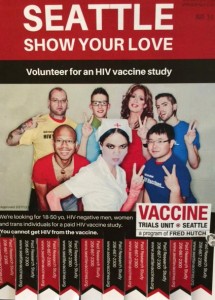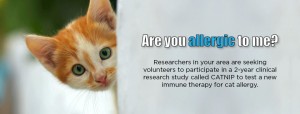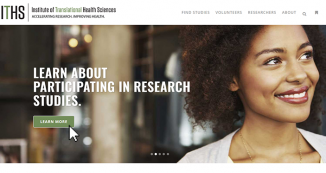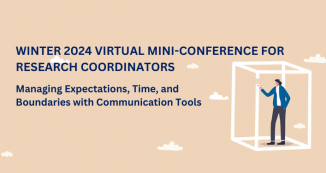
03 Mar Five Tips to Improve Clinical Trial Recruitment Flyers
In his 15 years as a research coordinator, the Institute of Translational Health Sciences’ Mike Donahue has spent a lot of time analyzing and designing study recruitment flyers. He recently shared with us his tips for creating a flyer that attracts potential study participants.
1. Design and write with your target audience in mind.
Before you create your recruitment flyer, you need to identify your audience. Who are you targeting? What are their interests and how do they spend their time? What images and copy will get them to look at your flyer? Ask yourself this question: why would they want to participate in your study?
If the study includes a broad age range, remember that the answer to these questions can vary by age, health history, ethnicity, and other demographic levels. Taking a moment to define your audience will make all the difference in the success (or failure) of your flyer.
2. Make it eye-catching and easy to read from a distance.
Think about the posters you see for theater or performance events. They catch your eye with color and imagery. The text is concise—a quick scan of the poster offers the major points.
Typical content includes: name of the event and theater or performance group, a short description of the event, venue location, dates, and where to buy tickets and find more information. Your recruitment flyer should follow a similar design format.
Not a Photoshop expert? Check out Canva, a free online graphic design program. This drag-and-drop software makes it easy to create a professional-looking flyer.
Some general design tips to keep in mind are:
- Keep typefaces limited to a maximum of two per flyer.
- Use color to attract your audience and highlight the key messages.
- Use images that will resonate with your target audience. Avoid Clipart and overly posed stock photography. This list of free stock photography sites should get you started.
3. When you are writing copy, less is more.
When creating recruitment flyers, we can be tempted to write down everything about the study. But that can lead to a crowded, difficult-to-read flyer.
The goal of the flyer is to pique enough interest that interested participants call the recruitment coordinator to learn more. Then the coordinator can answer questions and fill in the blanks. Being on the phone with a potential participant is the best recruitment tool we have.
Here are some basic copy tips:
- Create a short, eye-catching headline that ties back to the study. For example, the headline “Are You Allergic to Me?” in this CATNIP study grabs attention.
- Use the words “research study” somewhere in the text. If the study involves a drug or device, the flyer should indicate that it is investigational.
- List the purpose of the study.
- Use bulleted text to list basic participant eligibility criteria and what participation will involve, i.e., frequency of study visits, and what participants will be asked to do, and if there is compensation.
- When writing inclusion/exclusion criteria, consider how a potential participant would interpret it. You do not want eligible participants to self-select out. For example, the wording “must not be taking any medications” could cause people taking vitamins or an occasional ibuprofen to self-select out. Changing the wording to “must not be taking any prescribed medications” would help clarify this.
- Use plain language to improve readability and understanding. The PRISM Readability Toolkit can help you develop study materials that are easily understood by the general public.
What your copy should not do:
- Make unreasonable claims, such as promising health benefits.
- Mislead potential participants.
4. Write a Call to Action.
After you have explained the study, you need to add a Call to Action. What do you want the reader to do? Give them an action step. “For more information, call, email, or visit…”
If your study is posted on the recruitment site Participate In Research, you can also direct participants to that link, in lieu of having a study-specific website.
5. Create several versions of your recruitment flyer.
To reach different demographic groups within your target population, swap out the photos, try a new headline, and ask yourself the key question, “What aspects of this study will be most interesting to this audience?”
Looking for Recruitment Support?
Our Research Coordination Center staff has a wealth of experience troubleshooting recruitment challenges at the University of Washington and beyond. Our staff can help you to:
- Design effective strategies to increase enrollment and retention
- Advance a lagging recruitment timeline
- Offer flexibility for the research team and participants
- Find eligible patients quickly by engaging nurse coordinators to support screening
To learn more about hiring a part-time recruitment specialist to support your study, please visit the ITHS Research Coordination Center web page .
Just Want to Post a Study?
ITHS manages Participate in Research, a recruitment site that allows research teams to connect directly with potential participants and volunteers. Visit ParticipateInResearch.org to learn more or get started.









